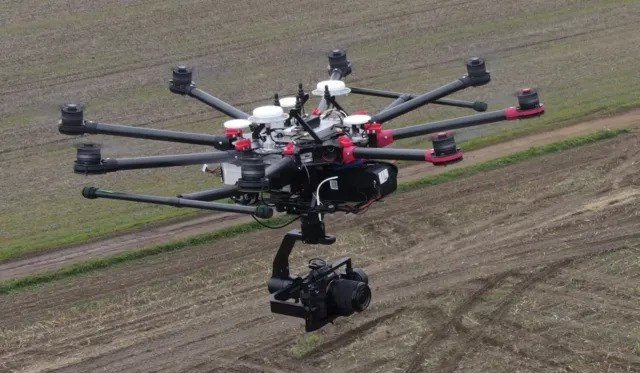Drones have become an integral part of various industries, from photography to surveillance. One crucial aspect contributing to the efficiency of these unmanned aerial vehicles (UAVs) is the type of batteries they use. In this article, we will delve into the design rules for Li-Ion batteries, specifically the lightweight 12S battery, and explore how adhering to these rules can significantly impact UAV performance.
Understanding 12S Battery
Before diving into the design intricacies, let’s comprehend what the term “12S” signifies in the realm of Li-Ion batteries. In simple terms, it refers to a battery configuration where 12 cells are connected in series. The significance of 12S lies in its ability to provide the required voltage for UAV applications, offering a balance between power and weight.
Design Considerations
When designing a lightweight 12S battery for UAVs, one must carefully consider the voltage and capacity requirements. Striking the right balance is crucial as it directly influences the drone’s flight time and overall performance. Weight is a critical factor, and a well-designed battery can significantly impact the drone’s maneuverability and endurance.
Choosing the Right Cells
Li-Ion batteries come in various cell types, each with its unique characteristics. Understanding the application-specific requirements is essential when selecting cells for a 12S battery. Factors such as energy density, discharge rates, and temperature sensitivity should be carefully evaluated to ensure optimal performance.
Configuration and Arrangement
The arrangement of cells in a 12S battery can be in series or parallel configurations. Each configuration has its advantages and disadvantages. Proper arrangement not only affects the battery’s overall performance but also plays a vital role in safety. A well-designed configuration ensures balanced voltage distribution among cells.
BMS (Battery Management System) Importance
To enhance the longevity and safety of a 12S battery, a robust Battery Management System (BMS) is indispensable. BMS monitors individual cells, ensuring they operate within safe voltage ranges and are balanced during charging and discharging. Investing in a quality BMS is a key consideration for UAV operators.
Temperature Considerations
Temperature has a significant impact on Li-Ion battery performance. Extreme temperatures can affect the efficiency and lifespan of the battery. Implementing effective temperature control measures, such as thermal management systems, is crucial for UAVs operating in diverse environmental conditions.
Casing and Enclosures
The lightweight nature of the 12S battery should not compromise its durability. Robust casing and enclosures protect the battery from physical damage, moisture, and other environmental factors. The choice of materials and design plays a pivotal role in achieving a balance between weight and durability.
Charging Practices
Proper charging practices are essential for maintaining the health of a 12S battery. Overcharging can lead to safety hazards and reduce the battery’s lifespan. Adhering to recommended charging guidelines and using chargers equipped with appropriate safety features is paramount for drone operators.
Testing and Quality Assurance
Before deploying a 12S battery in a UAV, rigorous testing and quality assurance procedures should be in place. This includes capacity testing, cycle testing, and ensuring compliance with industry standards and certifications. Thorough testing guarantees the reliability of the battery in real-world scenarios.
Regulatory Compliance
As the use of UAVs continues to rise, regulatory compliance becomes a critical consideration. Adhering to safety standards and regulations governing the use of Li-Ion batteries in UAVs is essential. Ensuring compliance not only enhances safety but also avoids legal complications for drone operators.
Advancements in Battery Technology
The field of battery technology is continually evolving, with ongoing advancements aimed at improving energy density, charging times, and overall performance. Staying abreast of the latest innovations is crucial for drone operators looking to integrate cutting-edge battery technology into their UAVs.
Real-world Applications
Several UAVs in various industries have successfully adopted lightweight 12S batteries. These applications range from aerial photography and surveying to agriculture and emergency response. Case studies and testimonials highlight the positive impact of well-designed batteries on drone performance.
Common Challenges and Solutions
Despite advancements, drone operators may face common challenges with 12S batteries, such as voltage imbalances and capacity degradation. Implementing regular maintenance routines and following manufacturer guidelines can address these challenges and ensure the longevity of the battery.
Conclusion
In conclusion, the design rules for Li-Ion batteries, particularly the lightweight 12S battery, are pivotal for optimizing UAV performance. From selecting the right cells to implementing effective temperature control, every aspect contributes to the overall efficiency and safety of the battery. As technology continues to evolve, staying informed about the latest trends and innovations is essential for drone operators seeking to harness the full potential of their UAVs.
Frequently Asked Questions (FAQs)
- Q: Can I use any Li-Ion cells for a 12S battery in my drone?
- A: It’s crucial to select cells that meet the specific requirements of your UAV, considering factors like energy density and discharge rates.
- Q: How does temperature affect the performance of a 12S battery?
- A: Extreme temperatures can impact efficiency and lifespan. Implementing temperature control measures is essential for optimal performance.
- Q: What role does the Battery Management System (BMS) play in a 12S battery?
- A: BMS monitors and balances individual cells, ensuring safe voltage levels and enhancing the overall longevity of the battery.
- Q: Are there any regulatory considerations for using Li-Ion batteries in UAVs?
- A: Yes, operators must comply with safety standards and regulations governing the use of Li-Ion batteries in drones.
- Q: How often should I test and maintain my 12S battery?
- A: Regular testing and maintenance, following manufacturer guidelines, are essential to ensure the reliability and longevity of the battery.
You may also like
-
Latest Technology: Why Are Mobile Games Changing the Way We Interact with the Digital World?
-
The Evolution of Storytelling in Video Games: From Pixels to Immersive Narratives
-
10 List of the Cheapest and Best Curved Type PC Monitors in 2024
-
The Role of Regulation Technology (RegTech) in Monitoring Online Color Prediction
-
How to Navigate Google Maps Transit Directions

